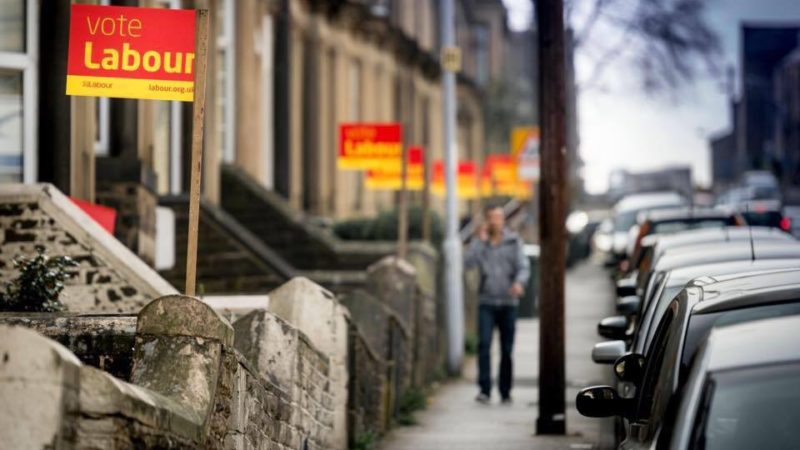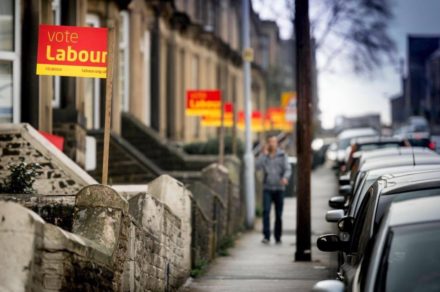

In the snap general election Labour will have to focus its resources on the seats where the vote was won or lost last time on the most narrow of majorities. These key marginals will tell us a lot about how the night of June 8 is going and are where all the miles trod by party activists could make the biggest difference.
The ten seats Labour will have to fight to defend:
City of Chester – Labour’s Chris Matheson has a sliver of a majority to defend – just 93 votes was the difference between him and the Tories in 2015. The seat backed Remain in the EU referendum, and Matheson will hope that this can make the difference in what is sure to be a hard fought race.
Halifax – Holly Lynch beat the Tories by just 428 votes in 2015. In the West Yorkshire seat, which backed Brexit, the Conservatives will mount a strong challenge.
Ealing Central and Acton – Rupa Huq is facing a steep challenge in the Labour-Tory marginal which she took by just 274 votes in 2015. The local Green party have decided to stand down and give the Remain-supporting MP their support in the pro-EU seat.
Brentford and Isleworth – Ruth Cadbury has a 465 vote majority in the seat, which was held by Labour throughout our time in government. The Tories will launch a strong challenge in the constituency, which backed Remain in the EU referendum.
Ilford North – Wes Streeting, the prominent Corbyn-sceptic, has a wafer-thin 589 vote majority in the East London seat, which he took off the Tories in 2015. The former Progress employee took the seat from a Tory, Lee Scott, who was MP from 2005 to 2015, and he will have to fight him again to keep the seat. The Greens have decided to stand down in the area and back Streeting.
Ynys Mon – Labour’s Albert Owen beat Plaid Cymru in 2015 by just 229 votes – but it is a resurgent Tory party in Brexit-backing Wales that could prove the bigger challengers to the seat. It is truly a bellwether seat and could go any of three ways on June 8.
Cambridge – Labour’s Daniel Zeichner won the seat from the Liberal Democrats by just 599 votes in the Remain-backing town. With the Lib Dem vote collapsing nationally at that vote, and their resurgence since, Zeichner has a fight on his hands to keep the constituency red.
Wirral West – Margaret Greenwood has a majority of just 417 votes in the Remain seat over her Tory rival. The Liverpool city region seat was taken by Greenwood from Esther McVey, the former Tory frontbencher, at the 2015 general election. The seat was Labour throughout our time in government.
Barrow & Furness – Currently represented by John Woodcock, who has only 795 vote majority. It isn’t clear whether Woodcock will be confirmed as the candidate, as the Labour Co-Operative MP is one of the most outspoken Corbyn-critics, who has said he doesn’t think the Labour leader would make a good prime minister.
Lancaster and Fleetwood – Cat Smith, frontbencher and prominent Corbyn supporter, is facing a steep challenge to defend her 1,265 majority from 2015. The seat backed Brexit in the referendum of last year.
The Ten marginals Labour will need to target:
Gower – The Tories have a majority of just 27 in the Welsh seat, which was Labour from 1910-2015.
Derby North – Chris Williamson lost by just 41 votes in 2015 and will contest the seat again. The prominent Corbynista will hope the leader’s new approach to politics can return him to parliament.
Morley and Outwood – The seat which Ed Balls lost in 2015 by just 422 votes will be another key race to watch. Balls will not be back to try and take the seat again for Labour.
Brighton Kemptown – A seat which Labour missed out on by 690 votes in 2015, with the Greens taking 3,187 votes. Represented by a Tory MP since 2010, the Greens are not standing in the seat this time around.
Bury North – The key marginal is currently Tory held, but they only had a 378 vote majority in 2015, in a seat which prior to 2010 had been Labour.
Croydon Central – Gavin Barwell won the seat for the Conservatives in 2015 with the fourth smallest majority in the country, of just 165 votes. Labour in 1997 and 2001, the seat has been Conservative from the 2005 election onwards. One that needs to be won for Labour to stand any chance of forming a government.
Vale of Clwyd – Labour from its inception in 1997 until 2015, Chris Ruane lost the seat by just 237 votes to his Tory rival – and will be back to contest the seat at the snap general election.
Plymouth, Sutton and Devonport – Tory MP Oliver Colvile beat Labour’s Luke Pollard by just 523 votes in 2015, and Pollard will again challenge for the seat.
Thurrock – The seat was won by the Tories by just 536 votes, with Labour second and UKIP a close third. In 2015 the Tories got 16,692 votes, Labour 16,156 and UKIP 15,718. The question is, with UKIP’s vote share collapsing, can Labour benefit or will the Leave seat stay Tory?
East Renfrewshire – The seat on the outskirts of Glasgow went SNP yellow, as most of Scotland did at the 2015 general election, but was held by former frontbencher and Scottish Labour leader Jim Murphy before then. Blair McDougall, former Better Together campaign director, has been selected for the seat, which backed the union in 2014. If tactical Unionist voting to come into play then he could be swept to victory. However, the Tories have a strong presence in the area, taking the corresponding Holyrood seat last year, and the vote could remain split between the Conservatives, Labour and the SNP allowing anyone of the three to take it. The SNP’s majority is just 3,718.




More from LabourList
Five Brent Labour councillors quit party and defect to Greens
NEC election timelines, party management and challenges ahead – Ann Black’s Labour NEC report
Labour’s identity crisis – caught between Blairism and Blue Labour